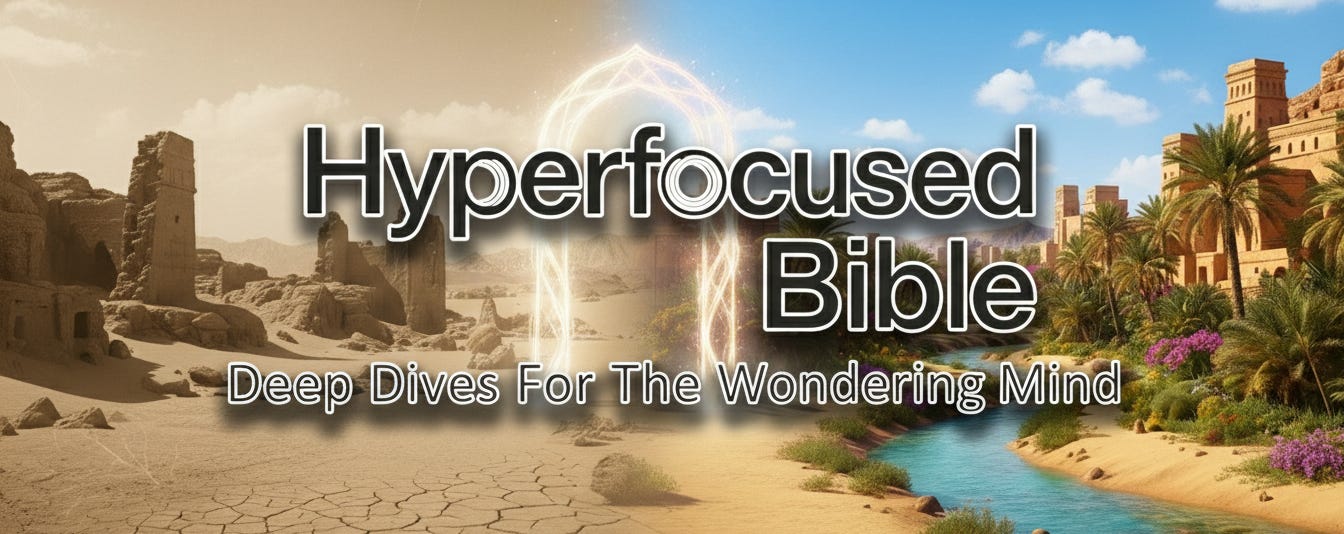Hyperfocused Bible
My Struggle:
I was a pastor and a doctoral student, but I had a secret: the Bible often felt boring to me. I believed it was true, I knew it was important, but the connection was missing. There were times it felt like a black-and-white history textbook, full of dense laws, genealogies, and stories that felt distant and disconnected from my own life. I would sit down to study and my mind would drift; I’d lose focus. I was drowning in academic jargon and theology lectures, both as a student and sometimes as a preacher. It was an integrity crisis: How could I lead others into a vibrant relationship with a book that I myself often found struggled to grasp?
My Awakening:
While working on my dissertation on theological preaching, I forced myself to slow down. I prayed for the Holy Spirit to give me more inspiration. Pretty soon I began to obsess over the context and the narrative. I wasn’t just looking for a sermon point; I was looking for the story.
Around the same time, as a fan of narrative podcasts, a question hit me like a lightning bolt: “Why don’t we tell Bible stories like this?” Why aren’t we treating the stories of Scripture with the same creative respect, historical depth, and narrative tension as the best secular storytellers?
That was it. The awakening. The realization that the problem wasn’t the Bible. The problem was our approach. And a new conviction settled into my soul: The greatest story ever told deserves to be told well.
The Change
You know that scene in The Wizard of Oz after the tornado drops the house, Dorothy opens the door, steps outside and it’s in vivid color? Do you know how the filmmakers achieved that effect? Check this out: The inside of Dorothy’s house and her costume were painted in sepia tones to mimic the black-and-white look of the Kansas scenes. Judy Garland had a double in a sepia-toned version of Dorothy’s dress.
She opens the door from inside the house as her sepia-toned double steps back out of frame, the scene continues in color, but now with Judy Garland in her full Technicolor blue gingham, walking through the door and into Oz. This innovative technique allowed the camera to keep running without having to cut, seamlessly merging “black and white” Kansas with the colorful world of Oz.
Well, that’s how it began to feel when I would read the Bible.
I started stepping through the door. My entire process transformed. Yes, I’d still start with the text, but then I’d go sideways, diving into context like a detective obsessed with a cold case. Roman historians became my companions. Ancient maps covered my desk. I’d trace trade routes with my finger while parsing Greek verbs and hunting down those obscure Aramaic idioms the Church Fathers argued about.
But here’s what changed everything: I started asking different questions. Not “What’s the theological point?” but “Where’s the human heartbeat in this story? Where’s the ache, the tension, the desperate hope?” I became addicted to discovering the humanity behind the holiness. These weren’t stock characters; they were real people with morning breath, cussing problems and unpaid debts.
That’s what the Spirit does. He helps us see the text like we’re not in Kansas anymore. (Sorry...had to do it)
The Transformation
Now, I don’t just read the Bible; I walk through it. I can see the dust, hear the arguments in the marketplace, and feel the tension in the throne room. My personal connection to God is deeper because the story He wrote is no longer a distant myth; it’s a present reality.
I am no longer intimidated by difficult passages or “boring” genealogies, because I now see them as clues in a grander narrative. I have the confidence to be a translator—to take the deepest theological and historical truths and make them accessible, compelling, and life-changing for people who are tired of being bored.
My life has changed because my calling is now crystal clear. I want to connect with others who are tired of black-and-white faith and are ready to see the Bible in full, breathtaking color.



